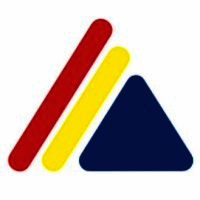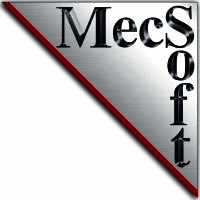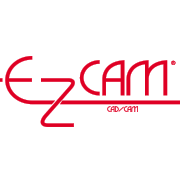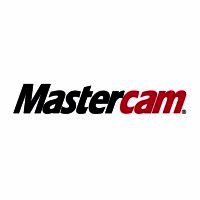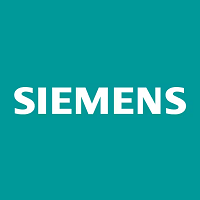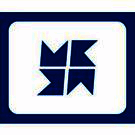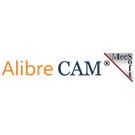What Is CAM Software?
CAM (Computer-Aided Manufacturing) software is a form of industrial software that controls and automates the manufacturing process. It is an important tool for manufacturers since it allows them to design, plan, and create things effectively and accurately. CAM software works in tandem with CAD (Computer-Aided Design) software to translate designs into instructions for equipment, such as CNC (Computer Numerical Control) machines, that produce the final product.
The fundamental role of CAM software is to generate toolpaths and machine instructions from 3D models and drawings developed with CAD software. This enables precise and consistent manufacturing with minimal manual involvement, resulting in higher-quality goods and greater efficiency. One of the primary advantages of adopting CAM software is its capacity to perform complicated calculations and simulations to improve the manufacturing process.
This includes assessing the most effective tools and cutting procedures, as well as simulating the machining process to discover and minimize probable errors or collisions. CAM software also includes complex functionality like 5-axis machining, multi-axis toolpaths, and support for various materials and machines. This increases manufacturing versatility and the ability to take on more demanding tasks.
When seeking to buy CAM software, you should examine the product's compatibility with your existing CAD software, the amount of support and training supplied, and the cost of the software and any additional modules or upgrades.
What Are The Recent Trends In CAM Software?
The world of computer-aided manufacturing (CAM) software is continually changing, with new developments and trends developing year after year. As a buyer, you must stay up to date on the newest advances in this industry so that you can make an informed decision about which software is most suited to your needs. In this buyer's guide, we'll go over the latest developments in CAM software that you should be aware of before making a purchase.
1. Cloud-Based CAM software: One of the most significant changes in the CAM software business is the transition to cloud-based solutions. This form of software eliminates the need for firms to rely on actual servers or pricey equipment to run their CAM systems. Instead, workers can access their applications and data from any internet-connected device, making it easier to collaborate and work remotely. This also lowers costs and increases scalability for organizations.
2. Automation And AI: Automation and artificial intelligence (AI) are transforming the manufacturing business, and CAM software is no exception. Recent advances in AI technology have enabled CAM software to autonomously build toolpaths, optimize cutting methods, and even detect and correct machining faults. This saves time and enhances efficiency while also lowering the possibility of human error.
3. Integration With Other Software: CAM software is increasingly being integrated with other software programs such as computer-aided design (CAD) software, product lifecycle management (PLM) systems, and enterprise resource planning (ERP) tools. This enables a continuous flow of data between departments and software, removing the need for human data entry and lowering the likelihood of errors.
4. Mobile Compatibility: Given the prevalence of smartphones and tablets, it is not unexpected that CAM software makers are making their products compatible with mobile devices. Manufacturers may now access and manage their CAM operations while on the go, providing additional flexibility and convenience. Some software even incorporates AR and VR capabilities, allowing users to visualize and replicate their machining processes in a virtual setting.
5. Focus On Sustainability: As environmental concerns grow, CAM software companies have begun to incorporate sustainability and eco-friendliness into their systems. This includes characteristics like energy-efficient cutting procedures, material optimization, and waste reduction during the manufacturing process. As more organizations prioritize sustainability, this trend will gain popularity in the CAM software sector.
Benefits Of Using CAM Software
CAM (Computer-Aided Manufacturing) software has transformed the manufacturing business, making design and production more efficient and accurate. This technique employs computer-aided design (CAD) data to control automated machinery that manufactures physical parts, reducing the need for manual programming. The advantages of adopting CAM software are numerous, and understanding them is essential for any buyer considering investing in this technology. Here are some important reasons why CAM software is a must-have for any manufacturing organization.
1. Increases Efficiency And Productivity: One of the most significant benefits of CAM software is the increased efficiency and productivity it provides. The use of automated machinery eliminates manual programming errors, resulting in faster output and less downtime. This enables organizations to achieve tight production deadlines and take on more projects, resulting in increased revenue.
2. Increases Accuracy And Consistency: CAM software employs advanced algorithms and exact calculations, resulting in very accurate and consistent parts. This decreases the possibility of errors and guarantees that each component fulfills the design specifications. This level of accuracy enables firms to build elaborate and intricate patterns that would be hard to make manually.
3. Reduces Costs: The usage of CAM software streamlines the design and manufacturing processes, resulting in long-term savings. Businesses that boost their efficiency and accuracy save money on labor, wasted materials, and time, which leads to higher profitability. Furthermore, lower errors mean less rework and scrap, which saves money and resources.
4. Improves Design Capabilities: CAM software includes extensive features that enable organizations to build complicated and exact designs that would be impossible to execute manually. This allows firms to provide unique and superior products to their clients, providing them a competitive advantage in the marketplace.
5. Provides Versatility: CAM software is not confined to one form of manufacturing. It can be used in a variety of industries, including automotive, aerospace, and medical, making it an adaptable solution for enterprises. This also helps organizations to broaden their offerings and take on new projects, so improving their market capabilities.
Important Factors To Consider While Purchasing CAM Software?
When considering acquiring CAM (Computer-Aided Manufacturing) software, a few critical elements must be considered to ensure a successful investment. These considerations include the intended usage, features and capabilities, compatibility, cost, and support. First, determine the CAM software's intended use. Different software solutions are tailored to specific industries, such as woodworking, metalworking, and 3D printing.
It is critical to choose software that is appropriate for the industry and type of manufacturing that your company specializes in. The features and capabilities of the CAM program should also be thoroughly assessed. Consider the tools and processes it provides, including 2D and 3D modeling, simulation, and toolpath optimization. To ensure that the program meets your company's specific requirements, you should also consider its ease of use and customization choices.
Compatibility with other software and hardware is also an important consideration. The CAM software should be able to interface easily with your existing design and manufacturing tools, streamlining processes and preventing compatibility concerns. When selecting CAM software, price is an important factor to consider. Some choices allow for a one-time payment, while others require a monthly or yearly subscription.
To identify the greatest fit for your company's budget and demands, consider the costs in relation to the features and capabilities. Finally, the amount of assistance offered by the software vendor is critical. Look for choices that provide full training and customer assistance to ensure that the implementation goes well and that any technical issues are resolved quickly.
What Are The key Features To look For In CAM Software?
When it comes to selecting the best CAM (Computer-Aided Manufacturing) software for your company, there are several important factors to consider. Because CAM software is so important in product design and manufacturing, choosing the right one is key.
To make an informed decision, below are the important characteristics to look for in CAM software.
1. CAD Software Compatibility: CAM software should be able to work easily with your current CAD (Computer-Aided Design) software. This ensures a smooth transition from design to manufacture, removing the need for human data reentry.
2. User-Friendly Interface: Look for CAM software that has a simple interface to navigate. This will save you time and enable for more efficient operation, especially for individuals who are not technologically aware.
3. Multi-Axis Machining Capabilities: CAM software that supports multi-axis machining increases manufacturing flexibility and precision. This is especially critical for complex designs with intricate elements.
4. Simulation And Verification Tools: A decent CAM program should have simulation and verification capabilities that enable you to see and test your design prior to production. This helps identify and repair any problems, lowering the likelihood of costly redo.
5. Modification Options: Because each organization has distinct requirements, it is critical to select CAM software that allows for modification to meet your individual demands. This ensures optimal efficiency and production.
6. Post-Processing Compatibility: Look for CAM software that works with a wide range of post-processors. This gives you more options for selecting the optimal manufacturing method for your product. 7. Technical support and training: Select a CAM software vendor who provides consistent technical assistance and training. This will allow you to rapidly solve any obstacles or challenges you may encounter, as well as make the best use of the software's features.
8. Cost-Effectiveness: The price of CAM software can vary substantially, so choose the one that offers the best value for your money. Consider each provider's features, support, and training to find the most cost-effective alternative. Overall, when selecting CAM software, it is critical to examine your specific business requirements and budget. Look for software that is compatible, easy to use, has advanced features, customization possibilities, and provides trustworthy support. This will ensure that you have a great tool to improve your production process and help your firm grow.
Why Do Businesses Need CAM Software?
CAM (Computer-Aided Manufacturing) software has become an indispensable tool for companies in a variety of industries, including manufacturing, engineering, and design. This software is critical for streamlining and optimizing the production process, resulting in enhanced productivity, cost savings, and competitiveness.
In this buyer's guide, we will look at the top reasons why organizations require CAM software and how it may help your firm.
1. Automation Of Complex Processes: One of the key reasons that firms want CAM software is to automate complex manufacturing processes. These operations frequently need exact measurements, sophisticated designs, and several steps, which can be time-consuming and error-prone. CAM software uses computer-controlled equipment and tools to complete these activities precisely and effectively, lowering the risk of human mistake while enhancing production.
2. Improved Production Accuracy: CAM software generates precise tool paths and machine instructions using computer-aided design (CAD) models. This precision guarantees that the finished product is consistent, with few deviations from the original design. The software also includes powerful simulation capabilities, which allow organizations to detect and solve any mistakes before manufacturing begins, resulting in a higher-quality end product.
3. Quicker Turnaround Time: In today's fast-paced corporate world, time is of the essence. CAM software allows organizations to make things faster than old manual methods, lowering manufacturing lead times and fulfilling tight deadlines. Businesses can use CAM software to optimize their manufacturing processes, increase efficiency, and drastically reduce the time it takes to bring items to market.
4. Cost Savings: Another compelling argument for organizations to engage in CAM software is the prospect of cost savings. By automating procedures, decreasing errors, and limiting material waste, CAM software may help organizations save money on manufacturing. It also reduces the need for expensive physical labor, lowering the organization's overall costs.
5. Flexibility And Customization: CAM software enables firms to tailor production processes to their own demands. The program can handle a wide range of materials, designs, and procedures, making it appropriate for a variety of production applications. Businesses using CAM software may easily adjust to changing market demands and consumer needs, ensuring long-term success and sustainability.
How Much Time Is Required To Implement CAM Software?
The time required to adopt CAM software varies based on several factors, including the organization's size, the complexity of the software, and the level of customization necessary. On average, the complete implementation process can take between a few weeks and a few months. The first stage in installing CAM software is to undertake a detailed examination of existing production processes and identify places where the program may be integrated.
This could entail collaborating closely with the software vendor and the internal team to ensure that the software is consistent with the company's aims and objectives. Once the analysis is complete, the software will be customized to match the organization's specific needs. This may entail installing and configuring the software, training staff, and moving data from previous systems.
The complexity of these tasks can affect the entire implementation time. Following the initial setup and modification, the software must go through a testing step to confirm that it is working properly and satisfying the organization's requirements. This is an important phase since it allows any bugs or flaws to be spotted and fixed before the software is officially released.
The final step is to actually launch the software. This includes delivering the software to all required devices and teaching personnel on how to utilize it successfully. This can take anything from a few days to a few weeks, depending on the organization's size and number of personnel. It is important to note that the implementation process does not finish with the software launch.
Organizations will need to constantly monitor and fine-tune the software to ensure that it produces the right results. Finally, while the time necessary to implement CAM software varies, it normally ranges between a few weeks and a few months. To guarantee a successful implementation, companies must have a clear grasp of their requirements and goals, collaborate closely with the software provider, and conduct extensive testing prior to the official launch.
What Is The Level Of Customization Available In CAM Software?
When it comes to CAM (Computer-Aided Manufacturing) software, customization is critical to consider. The level of customization possible in CAM software can significantly impact the productivity and efficacy of your manufacturing processes. In this buyer's guide, we'll go over the various features of customization in CAM software to help you make an informed decision for your company.
1. Interface Customization: One of the most fundamental types of customization in CAM software is the ability to change the user interface. This contains features like command layout, color palettes, and the ability to construct custom toolbars. Users can tailor the software to meet their unique needs and tastes, making it easier and more intuitive to use.
2. Process Customization: CAM software should include a variety of customization options for the manufacturing process. This includes the ability to build and save custom machining templates, as well as alter toolpaths and tool settings. With these customization possibilities, you may personalize the program to your specific manufacturing processes and needs.
3. Post-Processor Customization: The post-processor is an important part of CAM software because it converts toolpath data into machine-specific code. The level of flexibility possible for post-processors varies by CAM software. Some may provide a limited number of pre-built post-processors, but others allow for significant customization, including the option to develop bespoke post-processors. This amount of customisation can dramatically impact the software's compatibility with your individual computers and operations.
4. CAD Integration: When it comes to customization, integration with CAD software is an important consideration. This enables the seamless transfer of 3D models from design to CAM software, avoiding the need for manual geometry and measurement input. This interface should also allow for the modification of CAD settings and preferences within the CAM software, resulting in a seamless workflow between the two products.
5. Multi-Axis And Multi-Tasking Customization: Advanced production processes require customization options for multi-axis and multi-tasking machines. This includes the ability to construct unique toolpaths for complex geometries and control numerous machines at the same time. CAM software with advanced customisation for these capabilities can significantly increase the productivity and accuracy of your production processes.
Which Industries Can Benefit The Most From CAM Software?
CAM (Computer-Aided Manufacturing) software provides a diverse set of tools and capabilities that can considerably benefit a variety of industries. Whether you work in the automotive, aerospace, or medical industries, CAM software can help you optimize your manufacturing processes, enhance productivity, and improve product quality. The following sectors can benefit the most from CAM software:
1. Automotive Business: In the fiercely competitive automotive business, speed and accuracy are critical. CAM software offers advanced machining features such as 5-axis milling and multitasking, which can significantly increase component production speed and precision. It also provides simulation tools that enable virtual testing and optimization of machining operations, resulting in high-quality finished products.
2. Aerospace Industry: The aerospace industry has stringent standards and criteria, therefore precision and consistency are vital. The powerful programming and simulation capabilities of CAM software ensure precision machining of complicated parts while lowering the chance of errors. It also enables the development of lightweight and robust components required for spacecraft and aircraft design.
3. Medical Business: The medical business requires high levels of accuracy and precision when producing medical equipment and implants. CAM software provides comprehensive toolpath techniques and simulation capabilities to ensure accurate machining of complicated and delicate components. It also allows for the production of personalized implants, which ensure a precise fit for patients.
4. Electronics Industry: As technology advances, the electronics industry requires fast and precise PCB and electronic component fabrication. CAM software provides capabilities for efficient programming and simulation of complicated PCB designs, lowering the likelihood of errors and reducing production time. It also provides automated workflows for mass production, which increases efficiency and lowers costs.
5. Defense Business: The defense business requires high-quality, extremely precise components for military equipment. The specialized characteristics of CAM software, like as advanced toolpath methods and machine type compatibility, make it perfect for creating complicated and precise parts. It also provides simulation tools to evaluate and optimize the manufacturing process, assuring the highest degree of quality and dependability.
Conclusion
Finally, extensive studies and reviews show that investing in CAM software can significantly improve your company's production, efficiency, and cost-effectiveness. Using the appropriate CAM software can help you expedite your manufacturing operations, decrease errors, and enhance overall quality. When making your decision, think about compatibility with your current CAD software, the amount of support and training supplied, and the cost against the capabilities available.
Before making your final decision, make sure to thoroughly try the software and read user reviews. Remember that investing in CAM software entails not just obtaining the most advanced technology, but also determining the greatest fit for your specific business requirements. When choosing the proper CAM software for your firm, consider your budget, production goals, and team capabilities. With the information and advice provided in this buyer's guide, you can make an informed decision and elevate your manufacturing operations to new heights.






